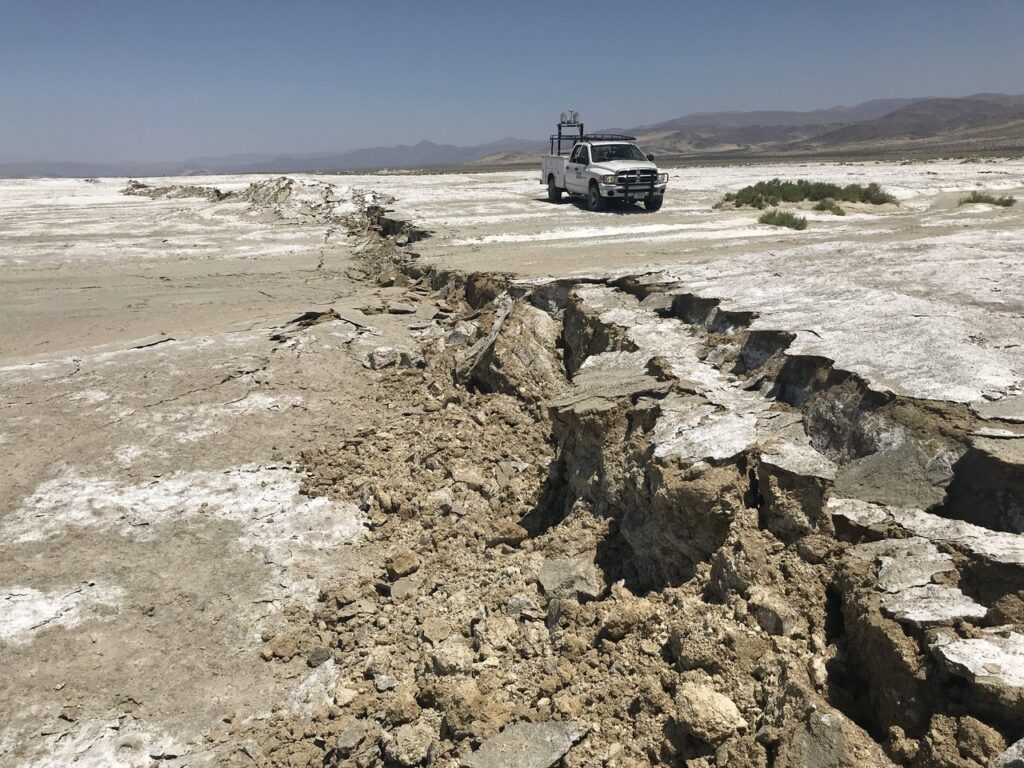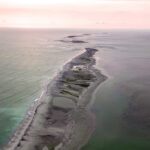**Heavy Snowfall and Rain Linked to Earthquake Swarms in Northern Japan by MIT Researchers**
**Revealing Hidden Earthquake Triggers**
A linkage that can only be described as striking – between savory weather events in northern Japan and seismic activity – has been discovered by researchers using uncommonly complete data from MIT. In a remarkable finding, they identify that, when underground pressures change, earthquake swarms can be set off by snowy and rainy weather. This presents a new frontier in understanding the interaction and linkage between climate and geological events, more so as climate change continues.

**Beyond Traditional Earthquake Triggers**
Traditionally, the search for an earthquake’s cause begins deep underground. Earthquakes are mostly caused by the collision of tectonic plates and the movement of faults and fissures under the earth’s surface. But now, new research from MIT shows that certain weather phenomena might also play a key role in initiating some quakes.
**Climate’s Role in Inducing Earthquakes**
In a paper published in Science Advances today, the MIT researchers report that a heavy snowmelt and heavy rain likely triggered a swarm of earthquakes in northern Japan over the past several years. It is the first time scientists have linked climate conditions to the initiation of some earthquakes. “We see that snowfall and other environmental loading at the surface impacts the stress state underground, and the timing of intense precipitation events is well-correlated with the start of this earthquake swarm,” says William Frank, an assistant professor in MIT’s Department of Earth, Atmospheric and Planetary Sciences (EAPS). “So, climate obviously has an impact on the response of the solid earth, and part of that response is earthquakes.”
**Seismic Activity and Climate Insights**
The study focuses on ongoing earthquakes in Japan’s Noto Peninsula. Based on the findings, seismic activity at the location surprisingly ebbs and flows with shifts in underground pressure as a result of seasonal snowfall and precipitation patterns. According to the researchers, the relationship between quakes and climate, as in the case with Japan, might not be limited to the Japanese Islands only but could possibly be worldwide. They predict that the climate’s influence on earthquakes will become more pronounced with global warming. “If we’re going into a climate that’s changing, with more extreme precipitation events, and we expect redistribution of water in the atmosphere, in the oceans, and on the continents, that will change how the Earth’s crust is loaded,” Frank adds. “That will have an impact, for sure. And it’s a link we could further explore.”
**Analyzing Seismic Patterns**
Hundreds of small earthquakes have hit Japan’s Noto Peninsula— a finger of land sticking up north from the main island and into the Sea of Japan— over the past several months. Unlike classical sequences, known as foreshock-mainshock, or mainshock-aftershock sequences, the activity at Noto is classified as an “earthquake swarm” as there hasn’t been a leading quakes— those with an obvious main shock or seismic trigger.
**Seasonal Changes and Seismic Responses**
Seismic interferometry analysis was conducted using an 11-year dataset of seismic measurements that were recorded by this network of monitoring stations. A station continuously registers the ground displacement or local shaking. From this, they were able to derive an evolving picture of seismic activity beneath the Noto Peninsula from the seismic velocity, or the speed at which seismic waves were traveling between stations. They noted that changes in seismic velocity were modulated seasonally but peaked especially at the same time an earthquake swarm had commenced in 2020.
**Hydromechanical Modeling and Seismic Analysis**
The project explored the position—the fact if environmental seasons could be a result of the Earth’s structure producing an earthquake swarm. They were looking for a trigger of ‘pore fluid pressure’ due to seasonal precipitation—fluid pressure from the porosity within the Earth’s cracks and fissures. “If it’s raining or if it’s snowing, that is an added weight that increases pore pressure, which slows When that weight is removed— either through evaporation or running off—the pore pressure decreases and seismic waves speed up,” Frank explained.
** Development of a hydromechanical model **
Wang and Cui constructed an 11-year hydromechanical model of the Noto Peninsula to simulate variations of pore pressure caused by seasonal precipitation. These were meteorological data, for example, daily snow, rain, and variations at sea level. With these inputs, they were able to monitor changes in the excess pore pressure beneath the peninsula and compare them with seismic velocity observations made.
**Summarise Relationship Between Snowfall and Seismic Activity**
Adding snow, especially extreme snow, to their model made the model fit the observations better. That indicates the continued swarm of earthquakes that residents of the Noto district have experienced can be explained by seasonal precipitation and by the occurrence of heavy snowfall events. “The time signature of these earthquakes matches up very well with periods of really heavy snowfall,” Frank says. “There’s a strong correlation between snowfall and earthquake activity, which would point toward some physical link between the two.”
**Impacts on Global Seismic Activity**
The researchers believe that intense snowing and other severe weather have an impact on seismic activity in other parts of the world. They noted that though not the prime reason, tectonic in origin always drives most earthquakes, the climate effects definitely modulate these. “When we first want to understand how earthquakes work, we look to plate tectonics as the primary cause,” Frank says. “But obviously, therefore, we also must consider other contributing secondary circumstances such as climate, which can relate to timing and the causality of earthquakes.”
**Future Research and Exploration**
These results further indicate that a correlation exists between climate and seismic activity. The global warming of the Earth’s atmosphere, at this time, has led to an increase in disastrous weather, making it highly imperative to comprehend how such changes may affect the Earth’s crust. This can help develop better predictive models for earthquake activity and improve our general understanding of the Earth’s dynamic systems.
“Disentangling environmental and tectonic controls of the Noto earthquake swarm in Japan” Qing-Yu Wang et al., 8 May 2024, Science Advances.
DOI: 10.1126/sciadv.ado1469
Portions of this work were supported by the National Science Foundation.
** Implications for Disaster Preparedness and Mitigation**
Appreciation of the relationship between climate and seismic activity can also help to improve disaster preparedness and mitigation strategies. There is a need to consider a regime that combines monitoring in both extreme weather and seismic activity-prone areas, which would showcase existing efforts in climatological conditions. This kind of approach would be able to improve early warning systems and place communities in better positions to be able to fend off any seismic eventuality.
**Broader Impact on Climate Science and Geology**
Also read: Expansive Phytoplankton Bloom Extends Hundreds of Miles Across the North Atlantic
The findings of this study contribute to broader discussions in climate science and geology of interconnectivity between the Earth’s systems. They sensitize the need for interdisciplinary collaboration in order to unveil the processes involved in the complex interaction of the atmosphere, hydrosphere, and lithosphere. With the furthering of the understanding of such relationships, a more comprehensive model could be pursued of the true complexity of the dynamics of Earth.
Other Sources: academia
Other Sources: thedebrief
**Educational and Public Outreach**
This work also has immense educational and public outreach potential.






One thought on “MIT Uncovers Alarming Impact of Weather on Triggering “Earthquake Swarms””